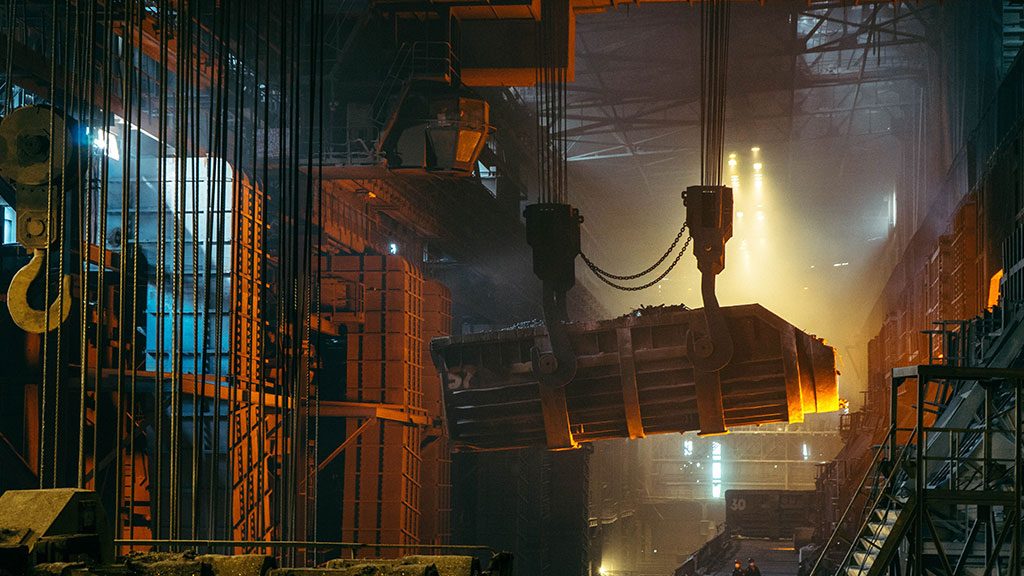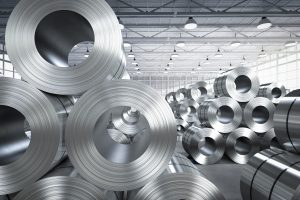The steel sector admits plans to transform into a net-zero carbon industry depends greatly on technology which hasn’t yet been perfected and will take at least 30 years.
Still, there are promising developments in the pipeline, says Catherine Cobden, president and CEO of the Canadian Steel Producers Association (CSPA).
And it’s with that aspiration to be net-zero by 2030 the CSPA is moving forward, she says. The challenge is palpable since making steel requires high heat and that means access to abundant energy. Coal has been the traditional source but now electric arc furnaces are fast becoming the source of choice.
As Cobden notes, it can’t happen without support such as the $400 million investment by the federal government in ArcelorMittal Dofasco’s (AMD) Hamilton steel plant to convert it to an electric arc furnace. The plan will use Direct Reduced Iron (DRI) feedstock and will cut three million tonnes of CO2 emissions.
Similarly, the federal government has invested $420 million with Algoma Steel in Sault Ste. Marie to cut three million tonnes of greenhouse gases, 70 per cent of their current total, by converting their flat rolled steel plant to electric arc.
Those numbers are significant, as Cobden notes.
“Our typical production level is about 13 million tonnes/year of steel, pipe and tube. Our emissions level is currently at 16 million tonnes/year as a sector. The two projects — AMD and Algoma — will remove six million tonnes/year combined.”
The scale of transformation is such that the industry can’t do it on its own, says Cobden.
“The reduction of six million tonnes is significant, equivalent to taking two million cars off the road. But this is a long road. None of this is going to happen without a lot of R&D. It is all promising but we’re in the very early days of hydrogen, for example.”
Even assembling supply chains can be a challenge. Securing a hydro supply is obviously one of the challenges beyond just converting the foundry, she adds, and the electrical system needs to be greened at the same time.
Electricity and hydrogen don’t just suddenly show up at the plant in abundant quantities, she cautions, so there’s a lot of work do be done in terms of sourcing and transportation.
The key to this part of the transition plan is electricity. In Ontario, for example, in 2020 about 56.8 per cent came from nuclear, 24.4 per cent from hydro, 6.3 per cent from natural gas, 8.7 per cent from wind and 2.4 per cent from solar. When the sun doesn’t shine and wind doesn’t blow, natural gas fills the gaps during peak demand.
Then there’s selecting which technologies make sense and beyond that the engineering challenge of adapting existing facilities to incorporate the new technologies and where in the process they are integrated.
For steelmakers, however, technologies are changing quickly, though if only incrementally.
Last July in Sweden, for example, car maker Volvo AB took delivery of a steel shipment produced without fossil fuels.
In their HYBRIT process by steel market SSAB, energy company Vattenfall and iron ore miner LKAB replace fossil fuels in iron pellets production and in the de-oxygenation of the iron using green hydrogen instead of coke. However, it won’t produce commercial quantities until 2026.
Green hydrogen is produced by splitting the H20 molecule using wind and solar electricity whereas blue hydrogen — which is the same gas — is created from methane with CO2 capture and sequestration. This is creating a stir in steel production.
Canada has its own hydrogen program with Alberta investing $15 million in a $1.3 billion blue hydrogen plant using its abundant and on hand resources of natural gas. The federal government has also partnered and a blue hydrogen hub is expected to be built in Edmonton by 2024.
Alberta’s plan is to ramp up production, transportation and use of hydrogen in a variety of applications across the province by 2030 and be in a position to export hydrogen surplus to local demand by 2040. Three plants are already up and running producing hydrogen.
In Quebec, miner Rio Tinto has partnered with European design engineering firm Paul Wurth SA and steelmaker SHS-Stahl-Holding-Saar GmbH & Co. KGaA (SHS) to investigate processing iron ore pellets using green hydrogen generated from hydroelectricity in Canada. The plan is to manufacture 11,000 MT of green hydrogen a year.
Similar projects are also underway in Europe while in Canada electricity driven processes are also getting a closer look as the industry seeks to reduce emissions by 90 per cent globally while remaining competitive.
Activist website Carbon Brief says only 553 conventional steel plants worldwide are responsible for nine per cent of all carbon dioxide emissions. Meanwhile, demand for steel is growing with the IEA forecasting production globally will grow by 30 per cent through to 2050.
The push towards greener steel is also a key weapon in the war on dumping, Cobden notes. With other countries not committing to lowering emissions it’s going to be more difficult to flood North America with cheap steel and under cut domestic producers who are signing on.
“With a global benchmark the first part is to see that North America has a significantly better carbon profile,” she says.
Forcing tariffs onto high emission steel will go a long way to levelling the playing field and force other producers to reduce their footprints.











Recent Comments
comments for this post are closed